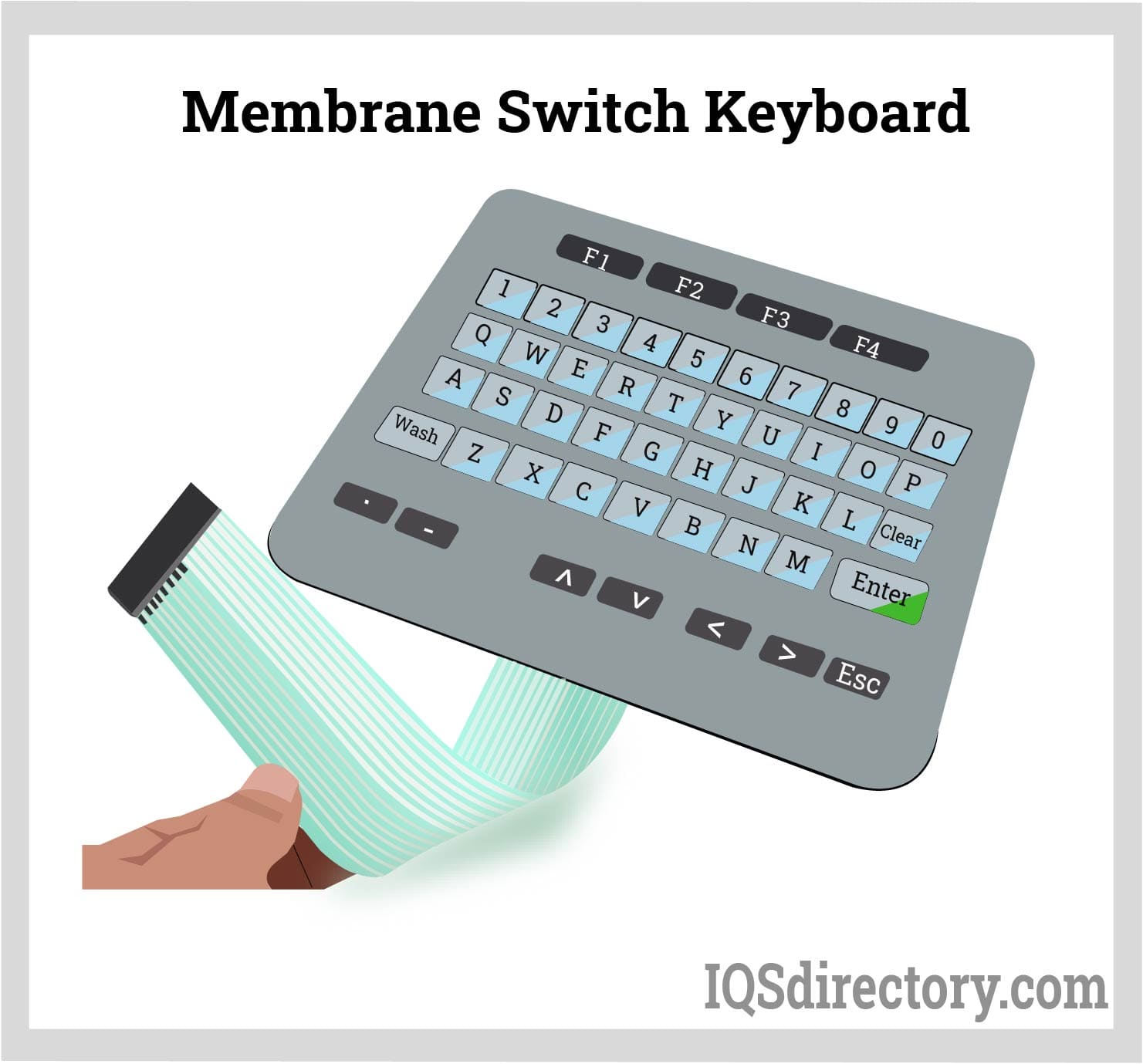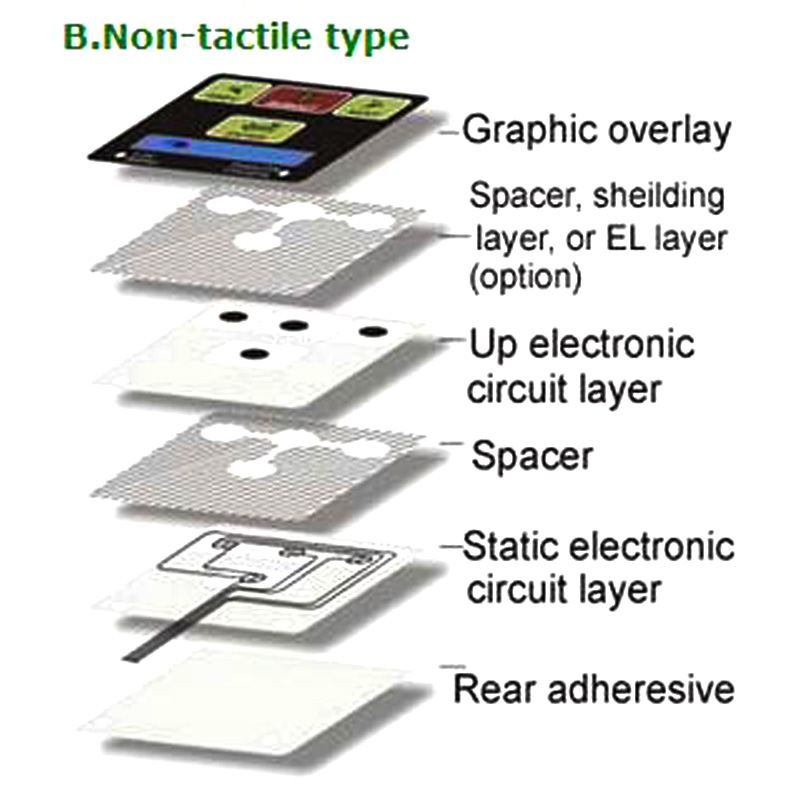The Manufacturing Refine Behind Membrane Switch: What You Required to Know
The manufacturing procedure behind membrane layer switches combines mindful design, product choice, and high quality control. It begins with recognizing the ins and outs of membrane switch style and progresses via numerous phases, consisting of product options and printing methods. Each stage plays a crucial function in ensuring capability and durability. The complexities of layer building and construction and the rigorous testing criteria may reveal insights that are not promptly evident. What lies beyond these foundational components?
Comprehending Membrane Layer Switch Design
Membrane layer switches may appear basic at very first glimpse, their layout involves intricate considerations that assure functionality and toughness. The design procedure begins with a comprehensive understanding of user demands, including the user interface's desired application and environmental variables. Ergonomics is a key component, as the design must help with convenience of usage while guaranteeing that tactile responses fulfills customer expectations.Moreover, the layering of parts, such as visuals overlays, sticky layers, and conductive traces, need to be specifically crafted. membrane switch. This split arrangement not just influences the switch's responsiveness however additionally affects its long life. Attention is provided to the sealing strategies utilized to secure versus wetness and dirt, which can compromise efficiency. Additionally, layout considerations include looks, where color pattern and aesthetic quality enhance user experience. Ultimately, the style of membrane layer changes balances capability, user experience, and durability, making sure that they satisfy the needs of different applications effectively
Products Utilized in Membrane Switch Over Production
When selecting materials for membrane layer button manufacturing, it is necessary to ponder both performance and durability. The main products include polyester and polycarbonate films, which give flexibility and toughness. These movies are typically coated with sticky to assure appropriate bonding to substratums. Conductive inks, generally made up of silver or carbon, are essential for creating electrical connections within the switch, enabling trustworthy operation.Additionally, a safety layer, such as a hard coat, is often related to boost scrape resistance and longevity. The choice of backing product, such as acrylic or foam, can significantly affect the button's tactile feeling and total user experience. Additionally, various ecological variables, including temperature level and moisture, should assist material choice to assure peak performance in details applications. Ultimately, the ideal mix of materials adds to the membrane layer button's performance and lifespan, making informed choices important for manufacturers.
The Printing Refine: Creating Video and Text
The printing process in membrane switch production plays a significant role in generating top notch graphics and message. Numerous graphic style techniques are used to ensure visual allure and functionality, while cautious ink choice approaches are necessary for sturdiness and performance. Recognizing these elements is fundamental for attaining finest lead to membrane button style.
Graphic Style Techniques
Graphic design strategies play an essential duty in the printing procedure of membrane buttons, as they specify how graphics and message will ultimately appear on the last item. Effective visuals layout includes the calculated use layouts, shades, and fonts to enhance readability and visual appeal. Developers typically make use of vector graphics for scalability, guaranteeing that pictures continue to be sharp at numerous sizes. In addition, focus to comparison and alignment is important, as it influences customer interaction and aesthetic high quality. The incorporation of branding components, such as logos, must be handled with like maintain brand name integrity. Overall, thoughtful visuals style techniques contribute substantially to the functionality and attractiveness of membrane buttons, affecting user experience and item efficiency.
Ink Selection Techniques
Choosing the proper ink is crucial for achieving the wanted visual high quality and toughness in membrane button manufacturing. Various ink types are used, consisting of solvent-based, water-based, and UV-curable inks. Each kind supplies distinctive qualities, such as resistance, versatility, and adhesion to environmental elements. Solvent-based inks are often preferred for their toughness and lively colors, while water-based inks are a lot more eco-friendly yet may have restrictions in adhesion. UV-curable inks give fast treating and durable efficiency. Furthermore, shade matching methods guarantee that the picked inks straighten with style specifications. Eventually, the selection of ink have to take into consideration factors such as application approach, substratum compatibility, and end-use demands to achieve remarkable cause membrane layer switch graphics and text.
Layer Construction and Setting Up

Product Choice Refine
A mindful choice of materials is essential in the manufacturing process of membrane buttons, as it straight influences capability and durability. The primary materials utilized consist of polyester, polycarbonate, and numerous conductive inks. Polyester is typically favored for its exceptional resistance to chemicals and abrasion, making it ideal for rough atmospheres. Polycarbonate, on the other hand, provides superior quality and impact resistance, which is beneficial for applications needing visibility and toughness. Conductive inks, typically composed of silver or carbon, are vital for developing reputable electric paths. Furthermore, the option of sticky products affects the overall honesty of the button - membrane switch. Examining aspects such as ecological direct exposure, responsive feedback, and aesthetic needs guides makers in selecting the most effective materials for their specific applications
Layer Adhesion Methods
Sticking layers in membrane layer switch building is a crucial procedure that ensures performance and longevity. Numerous bond methods are used to secure suitable bonding between layers, which generally consist of making use of adhesives, warm, and pressure. Pressure-sensitive adhesives (PSAs) are commonly used for their ease of application and prompt bonding capabilities. Furthermore, thermal bonding strategies can be applied, where warmth is utilized to turn on sticky properties, securing a strong bond. The option of bond method mainly relies on the materials included and the specific application requirements of the membrane switch. Appropriate positioning and consistent application of adhesives are vital to protect against issues, securing the switch operates successfully throughout its intended lifespan.
High Quality Control Procedures
Assuring quality control throughout the layer building and construction and assembly of membrane switches is important for preserving efficiency and integrity. This process usually includes a number of critical steps, consisting of extensive evaluations at each stage of production. Manufacturers utilize innovative screening techniques, such as peel visit tests and bond evaluations, to verify the integrity why not try these out of layer bonds. Furthermore, visual evaluations are carried out to identify any flaws in printing or product inconsistencies. Environmental problems, such as temperature and moisture, are thoroughly kept track of to ensure optimal treating and bond. Moreover, regular calibration of tools aids preserve precise manufacturing criteria. By implementing these top quality control measures, manufacturers can greatly minimize the threat of product failing, ensuring that the final membrane layer switches over fulfill the needed requirements and customer expectations.
Testing and Quality Assurance Steps

Developments in Membrane Layer Change Innovation
As developments in technology continue to evolve, membrane layer buttons are gaining from innovative advancements that enhance their performance and user experience. One notable advancement is the combination of capacitive touch technology, which permits for even more responsive and user-friendly interface. This shift not just improves aesthetic appeals yet also minimizes mechanical damage, prolonging the life expectancy of the switches.Additionally, developments in visuals overlay materials have brought about improved durability and resistance to environmental variables such as moisture and UV light. These products now use improved clearness and brightness, more elevating the aesthetic appeal.Furthermore, the incorporation of clever technology is transforming membrane layer switches over right into interactive control panels, enabling connection with IoT devices. This connectivity cultivates a smooth customer experience, visit our website leading the way for applications in various sectors, from medical care to customer electronic devices. Jointly, these developments placement membrane switches over as essential elements in modern device style.
Frequently Asked Inquiries
Exactly how Lengthy Does the Membrane Layer Switch Over Production Refine Take?
The period of the membrane button production process can differ considerably. Elements such as intricacy, materials used, and manufacturing volume influence timelines, with common production varying from a couple of days to a number of weeks for conclusion.
What Are the Usual Applications for Membrane Switches?
Membrane switches are frequently utilized in numerous industries, including vehicle controls, home appliances, clinical tools, and consumer electronics (membrane switch). Their versatility and longevity make them ideal for applications calling for easy to use interfaces and trustworthy efficiency in varied atmospheres
Can Membrane Switches Be Custom-made for Specific Needs?

What Is the Life-span of a Normal Membrane Layer Switch?
The life expectancy of a regular membrane switch differs, but generally, it varies from 1 to 5 million cycles. Factors such as usage, environment, and material high quality considerably affect toughness and overall efficiency with time.

Are Membrane Layer Switches Eco-friendly?
The ecological friendliness of membrane layer switches over varies. Some materials used may not be recyclable, while others can be eco-friendly. The general impact relies on producing techniques and products, demanding cautious consideration during choice and disposal. The production procedure behind membrane switches over combines careful design, material selection, and high quality control. It starts with recognizing the ins and outs of membrane button style and proceeds through various stages, including product selections and printing strategies. When choosing products for membrane switch production, it is important to contemplate both performance and resilience. A mindful choice of products is essential in the production process of membrane switches, as it straight influences performance and toughness. The choice of attachment approach greatly depends on the products included and the details application demands of the membrane switch.